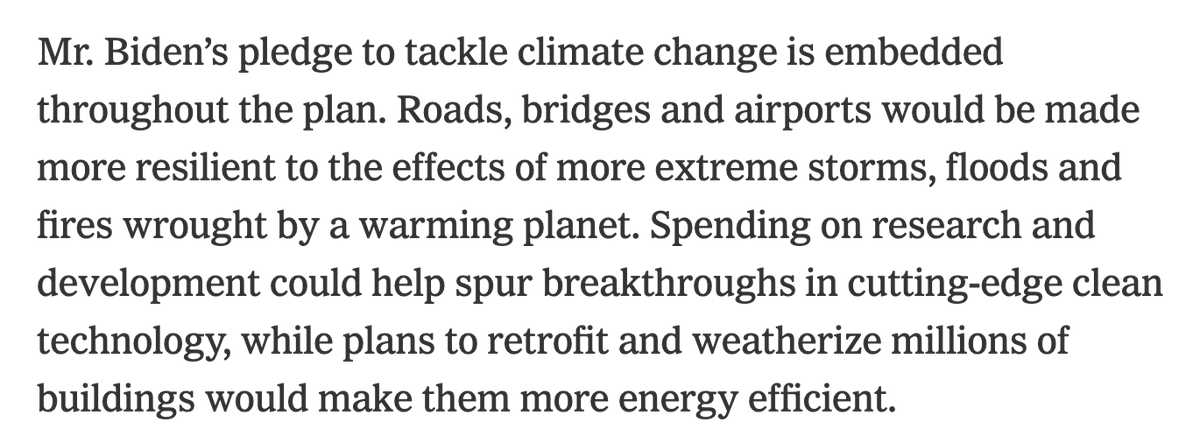
#ClimateAction is embedded throughout the 'American Jobs Plan,' including over $500b in what could be described as 'clean investment.' That's more than 5-times larger that the 2009 Recovery Act's spending on similar areas for context. An overview: nytimes.com/interactive/20… 


https://twitter.com/JesseJenkins/status/1377214958417641480



The plan would invest:
$174 billion in incentivizing electric vehicle manufacture and purchase, building half a million charger stations
$85b for public transit investments
$80b for modernizing Amtrak and freight railways
$174 billion in incentivizing electric vehicle manufacture and purchase, building half a million charger stations
$85b for public transit investments
$80b for modernizing Amtrak and freight railways
$100b to build a more reslient electric grid & expand transmission to harness renewable energy
$46b for clean energy manufacturing
$46b for fed govt to procure fleets of EVs
$35b for 'climate technology' R&D
$16b for fossil workers transition
$10b for Civilian Climate Corps
$46b for clean energy manufacturing
$46b for fed govt to procure fleets of EVs
$35b for 'climate technology' R&D
$16b for fossil workers transition
$10b for Civilian Climate Corps
It does not appear to have a $$ line item for clean electricity incentives, but calls for Congress to enact a Clean Electricity Standard. A CES or similar incentives can be passed via Budget Reconciliation, but will require additional appropriations. See filesforprogress.org/memos/evergree…
Details are stilll coming, but more than half a trillion dollars of 'clean investment' would probably be the MOST SUBSTANTIAL CLIMATE POLICY this nation has ever seen.
It's >5x larger than 2009 Recovery Act's ~$90b clean investment.
We may need more, but this is a BIG deal.
It's >5x larger than 2009 Recovery Act's ~$90b clean investment.
We may need more, but this is a BIG deal.
Here's more details in the fact sheet the White House just posted on the American Jobs Plan 👀 whitehouse.gov/briefing-room/…
Important addendum:
https://twitter.com/JesseJenkins/status/1377248196422987777?s=19
• • •
Missing some Tweet in this thread? You can try to
force a refresh




